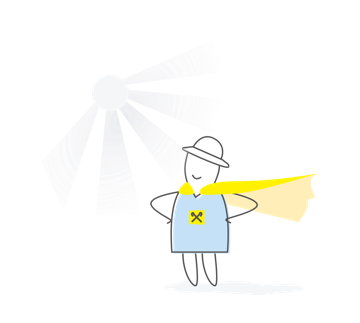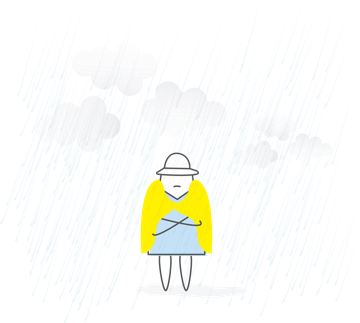Golden spice from Ukraine
For several years, the farmer was growing carrots and onions on his 25 hectares in Liubymivka village in the Kherson Oblast, but eventually, he came to realize that vegetables are not very profitable to grow, because when harvest is high market prices rapidly decline, and in the event of a drought or bad year he was running into debts. Vitalii was trying to grow strawberries, but the time to sell the harvest was counted in hours and the business itself is overly seasonal. He was looking for niche crops the market is not oversaturated with, and which could be sold over a long period. “We decided to try growing saffron, because this spice can be sold over the period of up to 10 years, and there is time to find customers. If this culture takes root, we could sell seedlings and the spice,” Vitalii Shakalo says. And that’s what happened.
Having planted 3500 dollars’ worth of onions on five ares of land, Vitalii and his family saw their investment returned in the first year, and were able to expand their business. They even bought a house near the field, to stay closer to the saffron treasure. Presently, Saffron Liubymivskyi Farm produces more than 10 tons of seedlings and more than 10 kg of spice per year, becoming the biggest supplier of saffron in Ukraine. Today, they grow this culture on more than five hectares of farmland. There are separate plots growing saffron for spice, for growth finishing and for reproduction.
Financial basis
The farm makes money not just on selling the spice but also on selling seedlings and providing consultations on plant care in Ukraine and Georgia. In Uzbekistan, Vitalii consults the Health of the Nation project that grows saffron on 300 hectares; however, the government forbade to sell it abroad, because this spice “must rehabilitate the nation”.
“You can start a small saffron business by planting the crop on 10 ares; for that, you’ll need 3.5-5 thousand dollars’ worth of seedlings. In the first year, you can produce 500 g of spice, and a kilogram in the second year. Payback comes in two years. Between the third and eighth year of the corm’s life, the farmer gets pure 100% profitability,” Vitalii Shakalo says. In his opinion, it makes sense to grow saffron even on 3-5 ares, because it needs minimal care and provides a substantial supplement to the family budget.
In Ukraine, one gram of saffron sells at 150-190 hryvnias in the market, depending on the purchase volume. Abroad, it costs more. “If people don’t know how to sell themselves, they sell raw saffron to intermediaries at 3-4 dollars, and they resell it abroad at 10 dollars per gram,” Vitalii says.
Saffron spice is sold retail as a healthy food additive. 90% of customers are elderly people who want to improve their health, and also, persons with cancer or those who want to have a better vision. Kharkiv National University of Pharmacology made a study of Ukrainian spices, which proved healthy properties of saffron.
Specifics of care
Comparing to other cultures, saffron is easy to grow. After buying seedlings, you don’t have to treat them – all you need to do is to plant the corms in open soil 15-20 cm deep. No need to spend money on fungicides, cultivation or mulching. In summer, you can apply some simple herbicide to soil, if necessary. The period of active vegetation is May, while blossoming and harvesting take place in September-November. You won’t have to dig out the corms after blossoming. The bulk of time and labor will be spent on harvesting. The flowers must be picked by hand, separating the stigma and carefully shaking off pollen, which is that very valuable spice.
In the Kherson Oblast, which is one of the driest and hottest regions in Ukraine, saffron feels well and can grow without watering. But in the farmer’s experience, the plant will blossom better and yield higher harvest if watered five times in fall and five-seven times in spring.
Saffron also grows in the central and northern parts of Ukraine, where it survives frost and rain without problem. In the Kyiv, Vinnytsia, Zhytomyr and Transcarpathian Oblasts, watering is not necessary at all, for there is enough natural moisture there. The crop has no natural enemies of note, thanks to specifics of its vegetation. This plant is very hardy. You can store corms in a warehouse or a garage, and it will begin to blossom in autumn anyway.
Sales after sales
The packaging of the spice into glass flasks is handled by the farmer himself and his wife. Vitalii Shakalo believes that such a valuable product cannot be packaged into plastic. For customers buying 50-100 grams of spice per month, they put it into small zipper bags.
The farm sells saffron spice and corms for planting via their Facebook pages https://www.facebook.com/SaffronLyubimovsky/ and https://www.facebook.com/shafranua/. They also receive orders for seedlings from their partner, a Dutch farmer.
An interesting example of partnership and marketing is the festivals of tulips, lavenders and lilies, which Vitalii organized on his farm. “When we just started growing saffron and I visited the field of a Dutch farmer near Zhytomyr, I saw how they were sorting tulip bulbs. The damaged bulbs were simply thrown aside as rejects, making a huge pile of them. When I was a child, I adored these flowers, so I asked them not to throw the bulbs away but give me to plant them,” he recalls. In late fall, he planted 30 ares of tulips and posted the photos of them in social media. A miracle has happened – the publication received 680 reposts overnight, and some local travel agency began advertising a spring tour to a tulip field. In the meantime, the post has gathered 4000 likes. Vitalii was embarrassed: there was no road leading to the field, piles of litter around and no infrastructure of note. He told the travel agency that the tour is not possible, and in response, people offered to pay to fix everything. The tour did take place, followed by another, and the farmer made over 30 thousand hryvnias on showing tulips. That was how he was paid back for salvaging flowers.
The idea became successful: people were happy to come over on weekends to enjoy the view of blossoming fields and take photos. At the same time, they would look at blossoming crocuses, learn about healing properties of saffron and buy the spice. Photos of the tour were posted in social media, and it was a real and effective advertising of Vitalii’s company.
After the unexpected success of the tulip festival, Vitalii approached the business like a businessman. He planted several varieties of Dutch lilies, narcissus, salvia and lavender. It became a “Little Holland in the Kherson Oblast”, attractive for tourists. He made an agreement with a travel agency on regular tours, where tour guides were telling interesting stories about various plants growing on Vitalii’s farm. No festivals were held this year because of the quarantine, but people who visited Saffron Liubymivskyi Farm continued to place orders online.
Pitfalls of business
Those who want to establish a saffron business must remember: there are many counterfeit seedlings in the market. Most often, swindlers sell corms of decorative crocuses, which will never yield that very “golden” spice. Even though the variety from which it is obtained is called “sowing crocus”, it does not reproduce with seeds, so the offers of saffron seeds are also a fake.
The ones who honestly grow and produce the spice will have to compete, when selling their product, both with cheap counterfeits and with more expensive products imported from India, which the buyer might prefer because of attractive packaging. The largest producers of saffron in the world are Iran and India. Iranian saffron is cheaper than Ukrainian one, but according to Vitalii Shakalo, it is worse in terms of chemical composition. “In Iran, saffron spice is usually soaked with olive oil during packaging to increase weight, and the oil quickly turns bitter,” he explains. Saffron from India is more expensive than the one produced in Ukraine.
Dreams and plans
“Ukrainian producers of saffron offer, in fact, not a product but a raw material, which someone else is then sells with added value. Domestically-produced saffron does not have a brand or a registered trademark; nobody promotes it in the domestic or foreign markets,” Vitalii Shakalo points out an area of development. He dreams about Ukrainian product becoming a world-renowned brand.
The farmer has an idea to create a cooperative or an association of Ukrainian saffron producers and go for direct exports under a single brand. Vitalii is not ready to handle that himself, but he is open to a partnership: he can provide a database of all producers, consult on the product’s specifics and share his market research findings. Presently, he creates, jointly with an online store, a multilingual website to sell saffron from Liubymivka all over the world.















